Recently, the School of Materials Science and Engineering of Shanghai Jiao Tong University and the team of the affiliated Ninth People's Hospital published their latest research results in Advanced Functional Materials, successfully developing a 3D printed bionic scaffold with a fractal structure. The scaffold significantly improves the efficiency of bone integration by simulating the multi-level fractal characteristics of natural bones, providing an innovative solution for the repair of large bone defects.
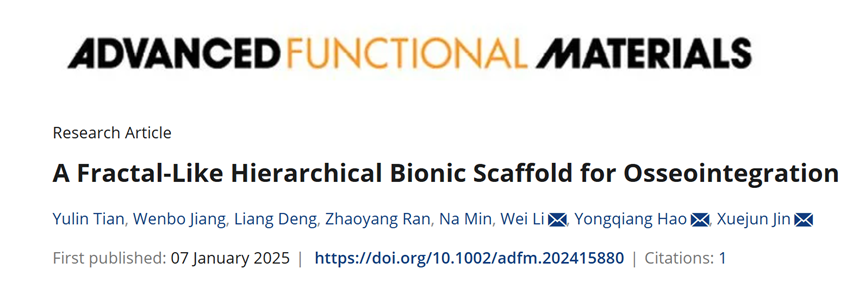
Background
Every year, about 4 million patients around the world face the problem of repairing critical-size bone defects due to trauma, tumors, and other reasons. Traditional autologous bone transplantation has limitations such as insufficient donors and secondary damage, while conventional 3D printed scaffolds are difficult to achieve efficient bone regeneration due to their single surface structure and poor mechanical adaptability. In nature, the unique fractal structure of bones (i.e., self-similar hierarchical arrangement) makes them both rigid and tough, and this feature has become a key breakthrough in bionic design.
Technological breakthrough
The research team innovatively combined fractal geometry with active screen plus plasma technology and proposed a "fractal bone repair bionic strategy":
Fractal Bionic Design
A porous titanium alloy matrix is constructed through laser selective melting technology, and a tantalum-titanium alloy layer is formed on the surface using high-activity and high-energy-density plasma, accurately reproducing the fractal bionics of natural bones from nanometer to millimeter scales (Figure 1).
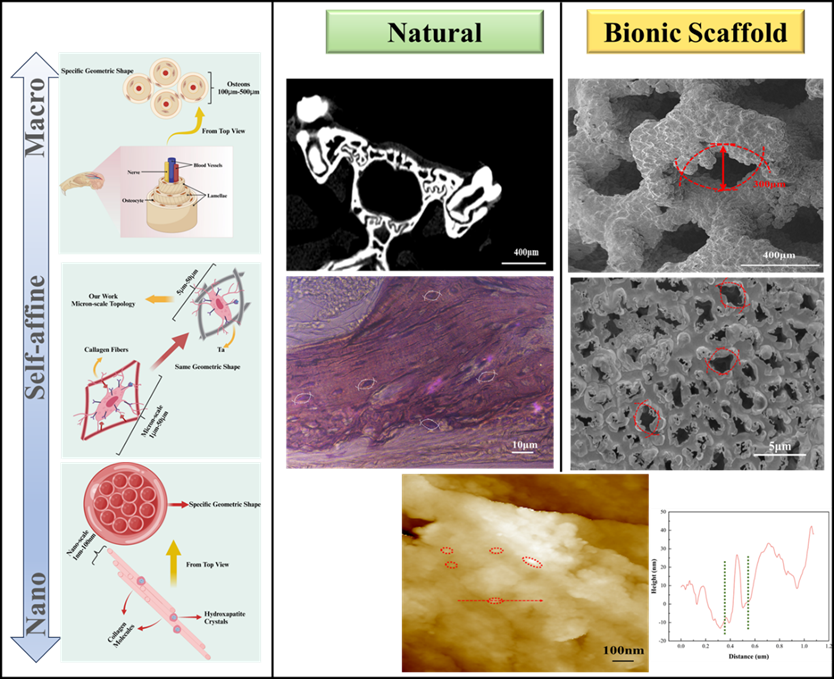
Mechanical properties optimization
The elastic modulus of the scaffold (22 GPa) is highly matched to that of real cortical bone (16.6-25.7 GPa), reducing the "stress shielding" effect, and the surface superelastic properties can withstand repeated loads (Figure 2).
Dynamic monitoring technology
The world's first application of photoacoustic tomography (PAT) to capture in real time the changes in physiological signals such as blood oxygen saturation and hemoglobin concentration during bone repair, revealing the key rule that angiogenesis precedes bone regeneration (Figure 3)
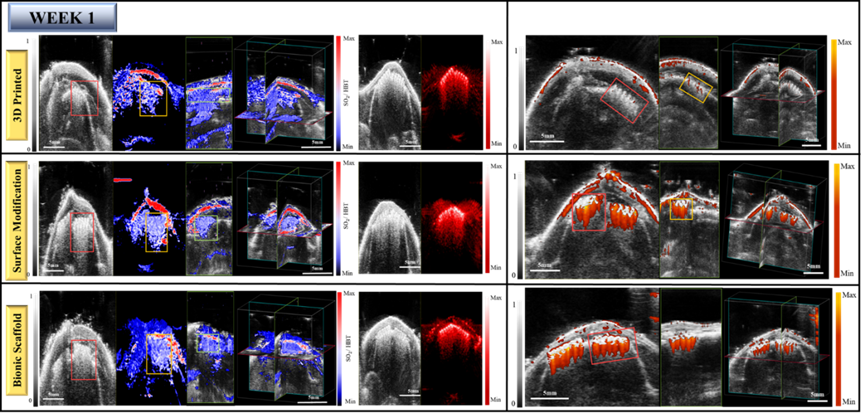
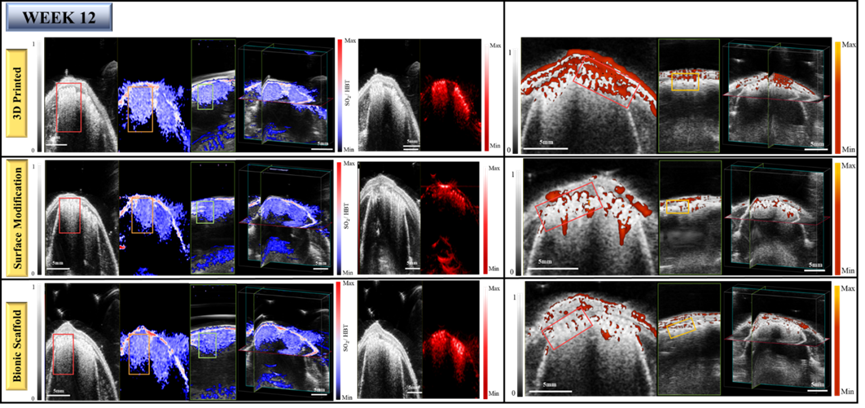
Results
In the rat skull defect model, the fractal bionic scaffold showed significant advantages:
Increased bone regeneration speed
Within 4 weeks, the volume of new bone reached 3 times that of traditional 3D printed scaffolds, and the defect area was completely repaired at 12 weeks (Figure 4).
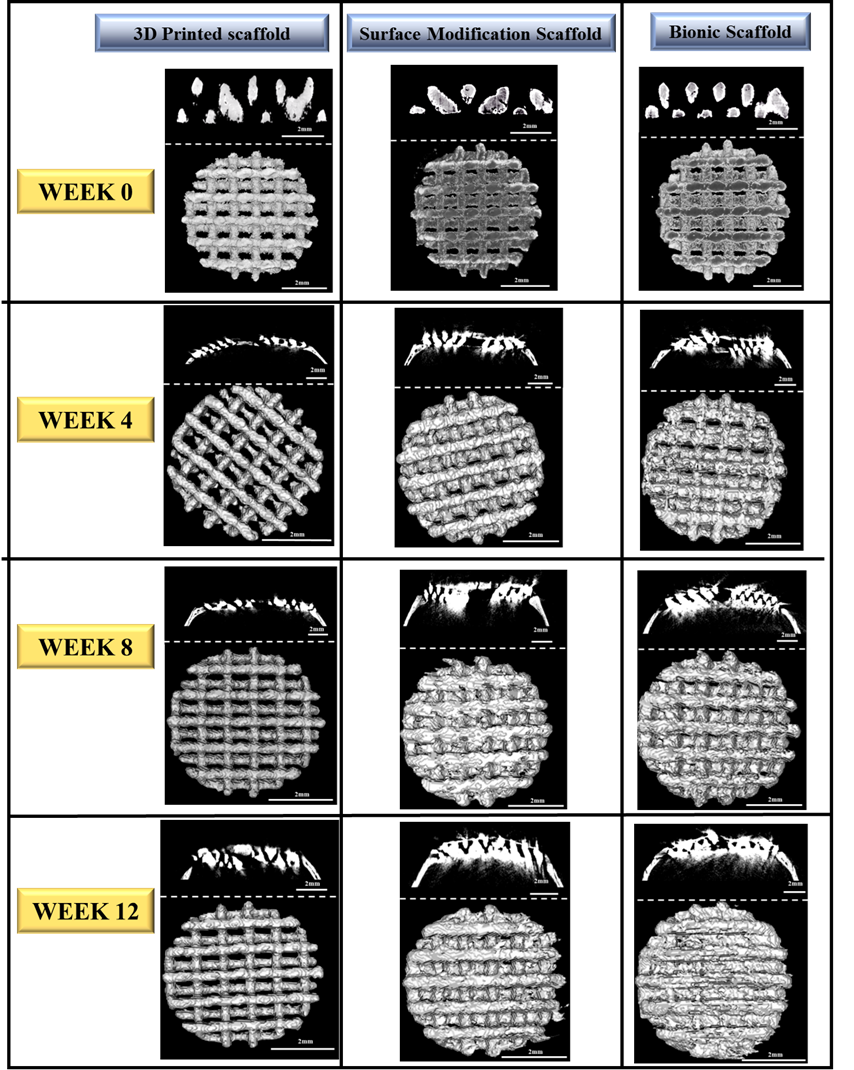
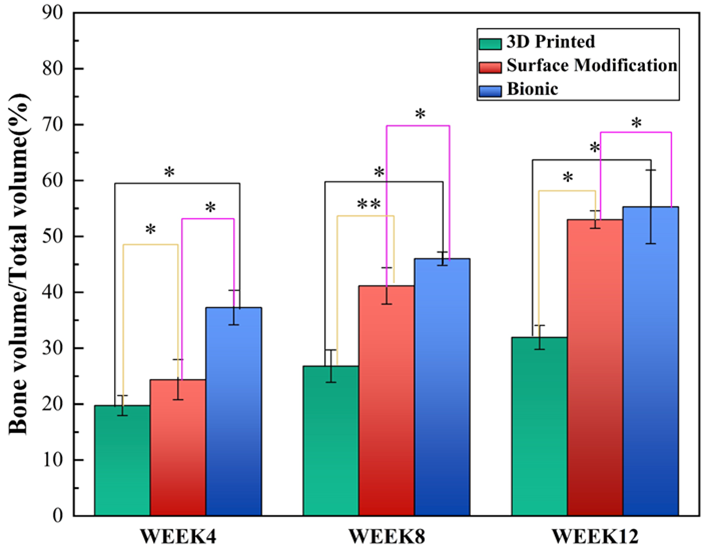
Enhanced vascularization
Photoacoustic imaging showed that the blood flow signal intensity increased 6 times one week after stent implantation, and the vascular network rapidly extended into the stent (Figure 5).


Enhanced bone regeneration
The proliferation rate of bone marrow mesenchymal stem cells (BMSCs) on the scaffold surface increased by 40%, and the expression of osteogenesis-related genes increased by 3 times ( Figure 6 ).
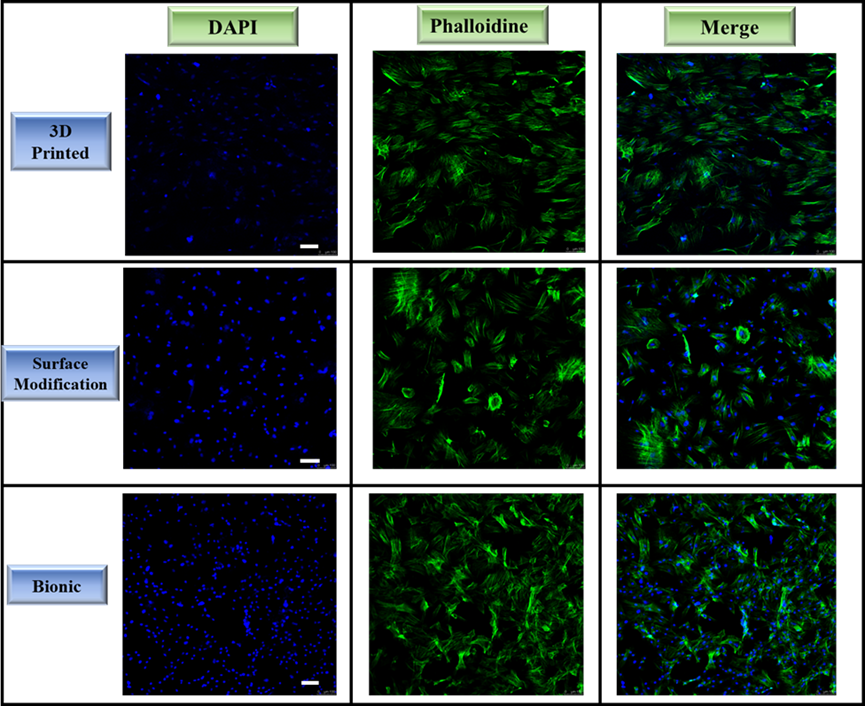

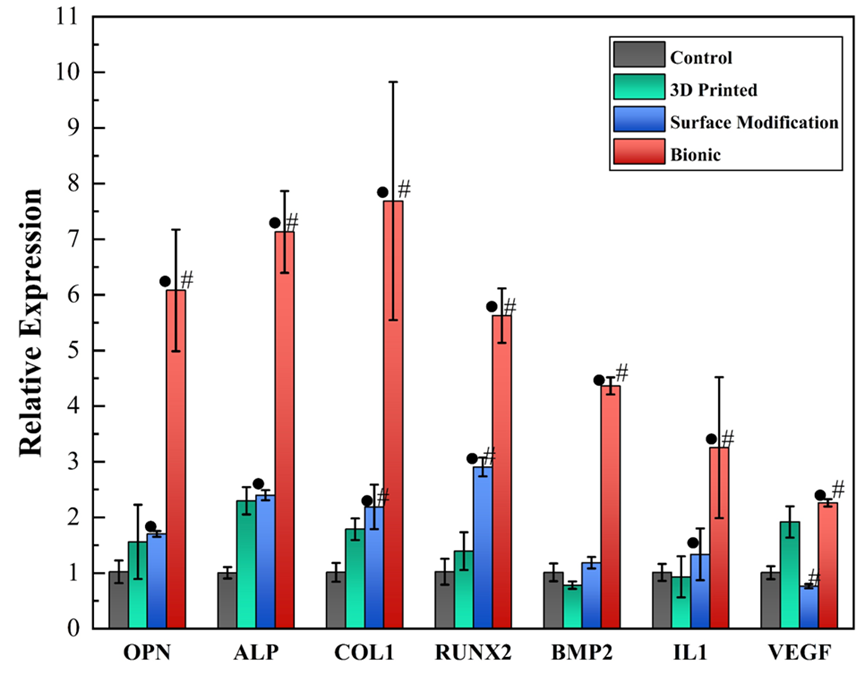
Application prospects
The scaffold has passed 20 preclinical trials, with the longest follow-up case exceeding 2 years, and patients have reported significant repair effects. The team is promoting large-scale production technology, and in the future, it will be possible to customize personalized bone repair solutions for use in maxillofacial reconstruction, joint replacement and other fields.
About the Team
This research was led by Professor Jin Xuejun, Associate Professor Li Wei, and Professor Hao Yongqiang, and the first author was Tian Yulin, a doctoral student in the School of Materials Science and Engineering. It was completed with the support of the School of Materials Science and Engineering of Shanghai Jiao Tong University, the Institute of Medical Robotics, the 3D Printing Clinical Translation Research Center of the Ninth People's Hospital, and the National Engineering Research Center for High-end Technology of Magnetic Resonance Diagnosis and Treatment. The project was supported by funds such as the Shanghai "Science and Technology Innovation Action Plan".
"This study not only revolutionized the design paradigm of bone repair scaffolds, but also opened up a new technical path for dynamic monitoring of bone regeneration." Associate Professor Li Wei, the corresponding author of the paper, said, "In the future, we will explore the application of fractal bionic strategies in the repair of complex tissues such as nerves and cartilage."
View the full paper: DOI: 10.1002/adfm.202415880
